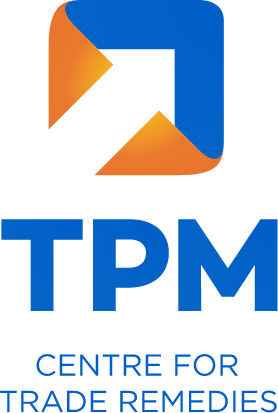Product Description –The product under consideration is “virgin polyethylene terephthalate (PET) resin”, defined as “polyethylene terephthalate resin having an intrinsic viscosity of 0.72 decilitres per gram or higher”. The product under consideration does not include recycled PET resin.
HS Codes – The product under consideration is classified under 39076190 and 39076990.
Uses –PET resin is basically used in manufacturing of preforms which is then converted into PET bottles and jars for storage of mineral water, carbonated soft drinks, edible oils, pharmaceutical products etc.
Countries involved – China PR
Applicants – IVL Dhunseri Petrochem Industries Limited and Reliance Industries Limited
Date of initiation – 1st October 2019
Period of investigation – September 2018 – June 2019
Injury period – 2016-17, 2017-18, 2018-19 and the period of investigation
Dumping margin, Injury Margin & Proposed Duty – The following exporter specific dumping margin, injury margin and proposed duty has been determined by the Designated Authority:
| Producer | Dumping Margin | Injury Margin | Provisional Duty |
| Range | Range | (US$/MT) | |
| Jiangyin Chengold Packaging Materials Co. Limited and China Prosperity (Jiangyin) Petrochemical Co. Limited | 20-40 | 0-20 | 146.11 |
| Jiangsu Xingye Plastic Co. Limited, Jiangyin Xingyu New Material Co. Limited and Jiangsu Sanfame International Trade Co, Limited | 0-20 | 0-20 | 60.92 |
| Zhejiang Wankai New Materials | 0-20 | 0-20 | 15.54 |
| Any other producer / exporter / combination | 20-40 | 0-20 | 200.66 |
Key findings –
1. Even though IVL had imported a small volume of product under consideration from China PR, it could not be excluded from the scope of domestic industry.
2. China PR has been considered as a non-market economy, unless the exporters demonstrate that they are operating under free market conditions.
3. In the absence of response by parent company, the market economy claim by an exporter was not acceptable.
4. The domestic industry has not only suffered material injury, but also there is threat of further injury to the domestic industry.
5. The material injury was evidenced by increase in volume of imports, price undercutting, price depression, decline in production, capacity utilisation and sales of domestic industry, loss of market share, and decline in profits, cash profits and return on capital employed of domestic industry.
6. Further, the rapid increase in imports, surplus capacities of producers in China PR, further anticipated increase in capacities in China PR, imposition of trade remedial measures against exports from China PR and emergence of India as the largest export market for Chinese producers, coupled with the current low prices, established threat of further aggravated injury to the domestic industry.

